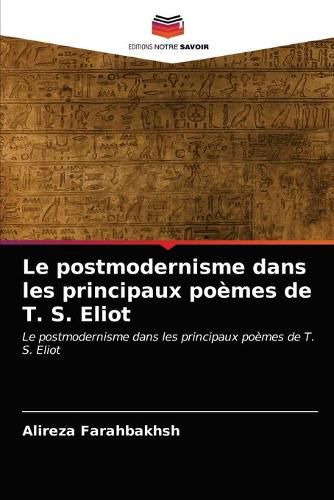Readings Newsletter
Become a Readings Member to make your shopping experience even easier.
Sign in or sign up for free!
You’re not far away from qualifying for FREE standard shipping within Australia
You’ve qualified for FREE standard shipping within Australia
The cart is loading…






This title is printed to order. This book may have been self-published. If so, we cannot guarantee the quality of the content. In the main most books will have gone through the editing process however some may not. We therefore suggest that you be aware of this before ordering this book. If in doubt check either the author or publisher’s details as we are unable to accept any returns unless they are faulty. Please contact us if you have any questions.
En tant que l'un des hommes de lettres les plus influents du XXe siecle, Thomas Stearns Eliot a impressionne differentes generations de lecteurs et stimule une quantite substantielle d'analyse critique. La reception generale et historique d'Eliot a ete en termes d'attachement au symbolisme, a l'imagisme, a la poesie metaphysique, au classicisme, au mysticisme et au modernisme francais. En tant que poete, critique et dramaturge, Eliot a ete salue comme l'un des fondateurs de New Criticism et l'un des meilleurs representants de l'ecriture moderniste, qui presentent tous deux des contrastes radicaux avec l'esthetique postmoderne. Cependant, les grands ecrivains peuvent etre relus a la lumiere de nouvelles theories critiques et philosophiques, et un poete du calibre d'Eliot ne fait pas exception. Ce livre explore les similitudes et les differences entre l'ecriture postmoderne, theorisee par des auteurs tels que Michel Foucault, Jacque Derrida, Jacque Lacan, Roland Barthes et Paul de Man, et les principaux poemes d'Eliot, dont La chanson d'amour de J. Alfred Prufrock, Geronion, The Waste Land, The Hollow Men, Journey of the Magi, Ash Wednesday et Four Quartets .
$9.00 standard shipping within Australia
FREE standard shipping within Australia for orders over $100.00
Express & International shipping calculated at checkout
This title is printed to order. This book may have been self-published. If so, we cannot guarantee the quality of the content. In the main most books will have gone through the editing process however some may not. We therefore suggest that you be aware of this before ordering this book. If in doubt check either the author or publisher’s details as we are unable to accept any returns unless they are faulty. Please contact us if you have any questions.
En tant que l'un des hommes de lettres les plus influents du XXe siecle, Thomas Stearns Eliot a impressionne differentes generations de lecteurs et stimule une quantite substantielle d'analyse critique. La reception generale et historique d'Eliot a ete en termes d'attachement au symbolisme, a l'imagisme, a la poesie metaphysique, au classicisme, au mysticisme et au modernisme francais. En tant que poete, critique et dramaturge, Eliot a ete salue comme l'un des fondateurs de New Criticism et l'un des meilleurs representants de l'ecriture moderniste, qui presentent tous deux des contrastes radicaux avec l'esthetique postmoderne. Cependant, les grands ecrivains peuvent etre relus a la lumiere de nouvelles theories critiques et philosophiques, et un poete du calibre d'Eliot ne fait pas exception. Ce livre explore les similitudes et les differences entre l'ecriture postmoderne, theorisee par des auteurs tels que Michel Foucault, Jacque Derrida, Jacque Lacan, Roland Barthes et Paul de Man, et les principaux poemes d'Eliot, dont La chanson d'amour de J. Alfred Prufrock, Geronion, The Waste Land, The Hollow Men, Journey of the Magi, Ash Wednesday et Four Quartets .